Questions about bridges, peacocks, mascots, iguanas, the DMV? Curious305 has answers
What do you wonder about, South Florida?
We want to know.
That’s why we started Curious305, our community-powered reporting series that seeks to answer questions about Miami-Dade, Broward, the Florida Keys and the rest of the Sunshine State. The crowdsourcing project is just one way we’re working to involve you, our readers, in our journalism.
Here’s how Curious305 works: You send us a question using an online form, and our journalists research and report the answer.
And you’ve sent us a lot of questions.
You’ve asked for tips on falling frozen iguanas in Miami-Dade and how to scare peacocks away from your home. You’ve wanted a guide to boating in Florida. And you’ve also shared things that have stumped you, like how Hialeah street numbers don’t match the streets of Miami, as well as things that frustrate you, like how it’s difficult to get an appointment at the DMV.
You have other curiosities on your mind, too, such as why Miami isn’t the state capital. You also asked us to look into PayByPhone and ParkMobile, popular parking apps in South Florida, and whether auto insurance would cover iguana damage.
We hear you. And we’ve got answers.
Below are five new questions and answers among our Curious305 collection. And if you’ve got curiosities, make sure to fill out the form and ask us questions.
How can I get rid of peacocks — and why are they in Miami?
There’s nothing like watching peacocks roam the streets of Coconut Grove. These graceful birds, with their multi-color plumage, are Miami royalty. But what is that horrible screeching sound?
It’s the peacock. Look, now it’s on top of your car. And it just pooped.
Ahh, life in Miami, where we marvel at a picturesque downtown skyline, but sit in eternal traffic jams and get to live side-by-side with chickens, iguanas, gators — and peafowl.
The Miami area is peafowl haven. The males are known as peacocks and have the beautiful plumage. The females are peahens. Together they’re peafowl, and when they mate, they make peachicks.
Peafowl are not native to the U.S. and are the national bird of India. The birds, which are native to India and Sri Lanka, were brought to Miami to be exotic yard ornaments, or so the story goes. In the 1920s and ’30s, people put classified ads in the Miami Herald selling peafowl. One ad described the bird as having “wonderful plumage” that would “ornament any home or division.”
Their nesting ground eventually became Coconut Grove, and while they can’t fly far, they’ve expanded their turf to other parts of Miami-Dade County, including Coral Gables and Key Biscayne. Unlike invasive iguanas, which are on the state’s hit list, peacocks are protected by Miami’s designation as a bird sanctuary, to the dismay of some Coconut Grove residents.
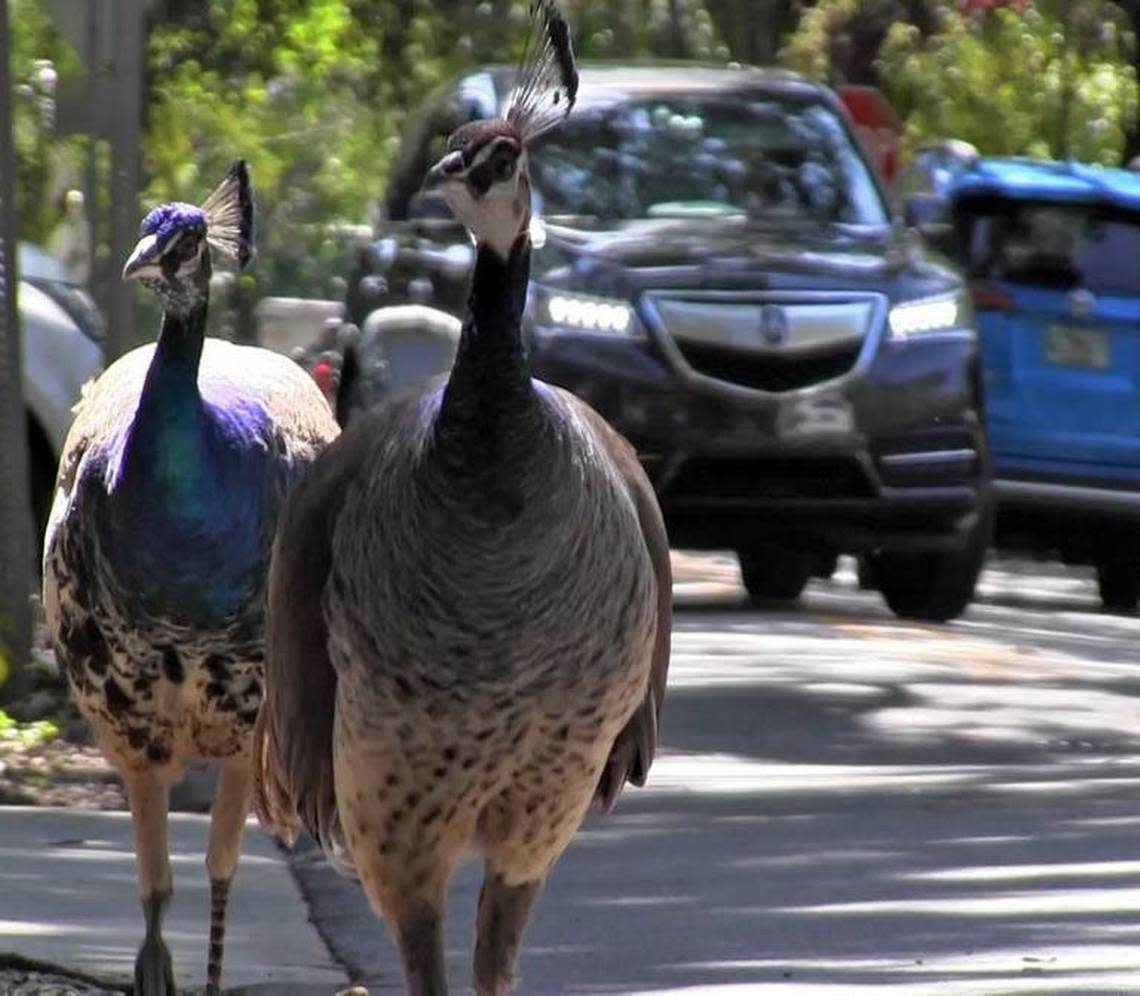
You can’t kill peafowl, even if their cries or thump-thump-thumping on your roof drives you crazy. The law, which Miami-Dade County approved in 2001, lets people remove the birds from their homes as long as the peafowl aren’t injured. The city of Miami has the same ordinance on the books. Both the city and the county updated their laws recently to allow for the humane removal of unwanted peacocks from homes.
But it’s complicated. Florida prohibits trappers from releasing invasive species into the wild, which means the birds can’t be released into the Everglades or your ex’s home. Catching peacocks is a workout. Finding a peacock sanctuary also isn’t easy.
While leaders try to figure out a peafowl solution, people can do a few things to try and scare (but not injure) the birds away from their home. Here are some tips from the Florida Fish and Wildlife Conservation Commission and Miami-Dade Animal Services:
▪ Don’t feed the birds.
▪ Make loud noises, spray a water hose or use a motion-activated sprinkler to try and scare them away. Water is one of the most effective humane deterrents for peafowl.
▪ Don’t leave pet food outside and get rid of your bird feeders.
▪ Use car covers to help prevent damage from angry peacocks that attack their reflection thinking it’s another male bird.
The goal is to make your house unattractive to peafowl, according to the Fish and Wildlife agency, which considers the birds a domestic species like chickens and guineafowl.
And while the birds are sometimes a nuisance — attacking cars, pooping and mating everywhere, eating flowers and screeching in the early morning hours — the state agency says they’re not a threat to Florida’s ecosystem.
Peacocks are also a 305 icon. After all, Miami loves its birds. Haven’t you seen the rooster sculptures in Little Havana?
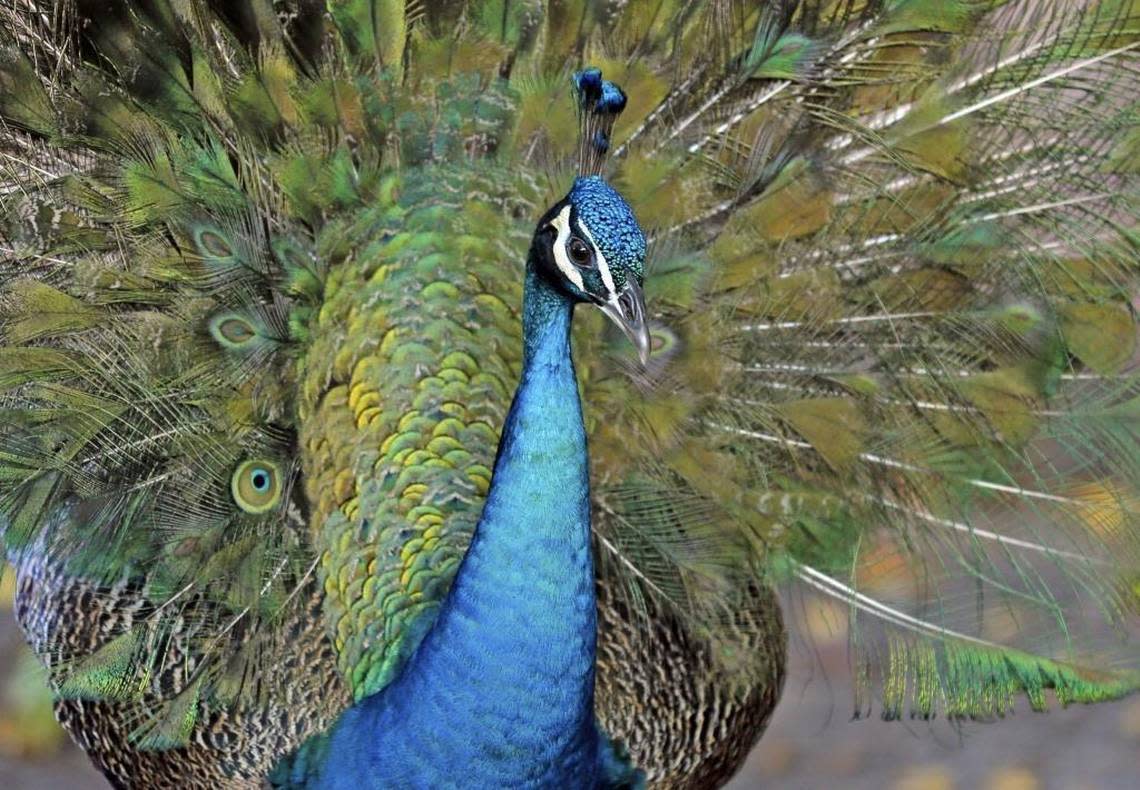
How did FIU and MDC get their mascots?
Roary the Panther wasn’t always Florida International University’s No. 1 fan. At first, the school’s mascot was a yellow creature called Sun of a Blazer, and you’ve never seen anything like it.
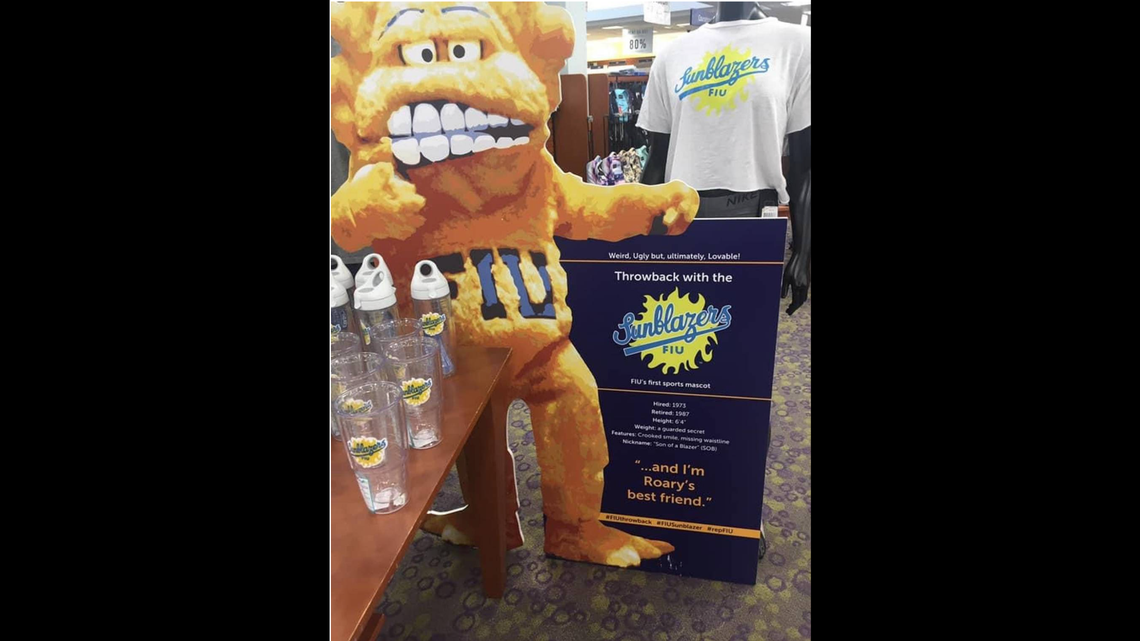
The creature, also known as Son of a Blazer, was created by art student and basketball player Jamee Houk, whose design won a mascot contest.
Her prize? A hundred bucks, good money at the time for a “starving artist” like herself, Houk said in a phone interview with the Miami Herald. The mascot was unveiled during FIU’s 1985 homecoming, according to the university’s student newspaper at the time.
Houk, now an animation director, has worked in the character design and visual effects industry for nearly 40 years, including on “Scooby-Doo 2: Monsters Unleashed,” “Fantastic Four” and the Academy award-winning “Happy Feet.”
We couldn’t help ask the mascot’s creator what everyone has always wondered: What exactly is Son of the Blazer?
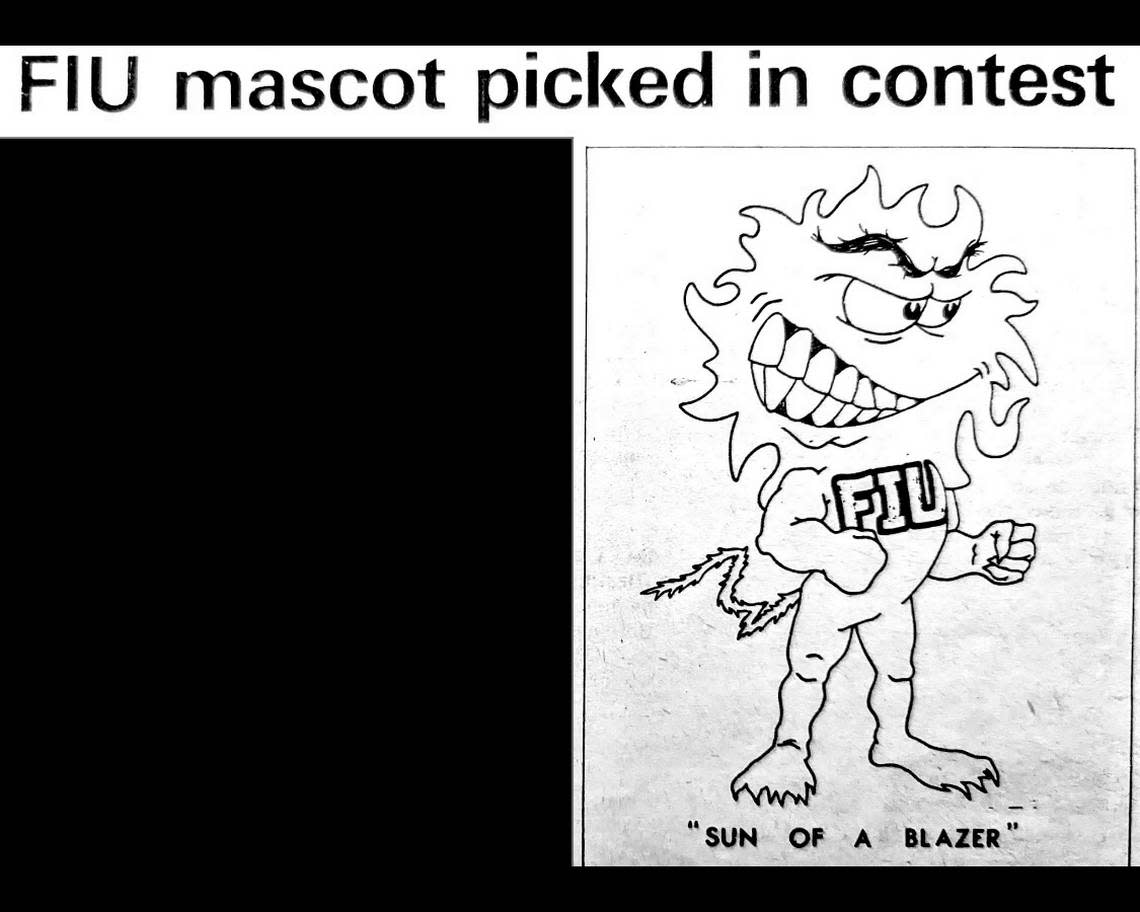
Houk said she wanted FIU’s mascot to have personality. But the character also had to give off a “we’re gonna beat you” vibe. So Houk made a character with a “tough guy body” and a sun flare for a head, to connect it with the nickname of the sports teams, the Sunblazers.
“I prefer not to be called S.O.B. I hate Sunny, but Blaze is not that bad,” the mascot said in November 1985 during his first press conference, according to FIU’s student newspaper. Houk didn’t pick the mascot’s name.
FIU eventually dropped the mascot, as well as the Sunblazers nickname, during the first year of Modesto Maidique’s presidency in 1987. The university’s teams then became known as the Golden Panthers and the mascot became a Florida panther called “Roary,” which Maidique believed people could identify with more.
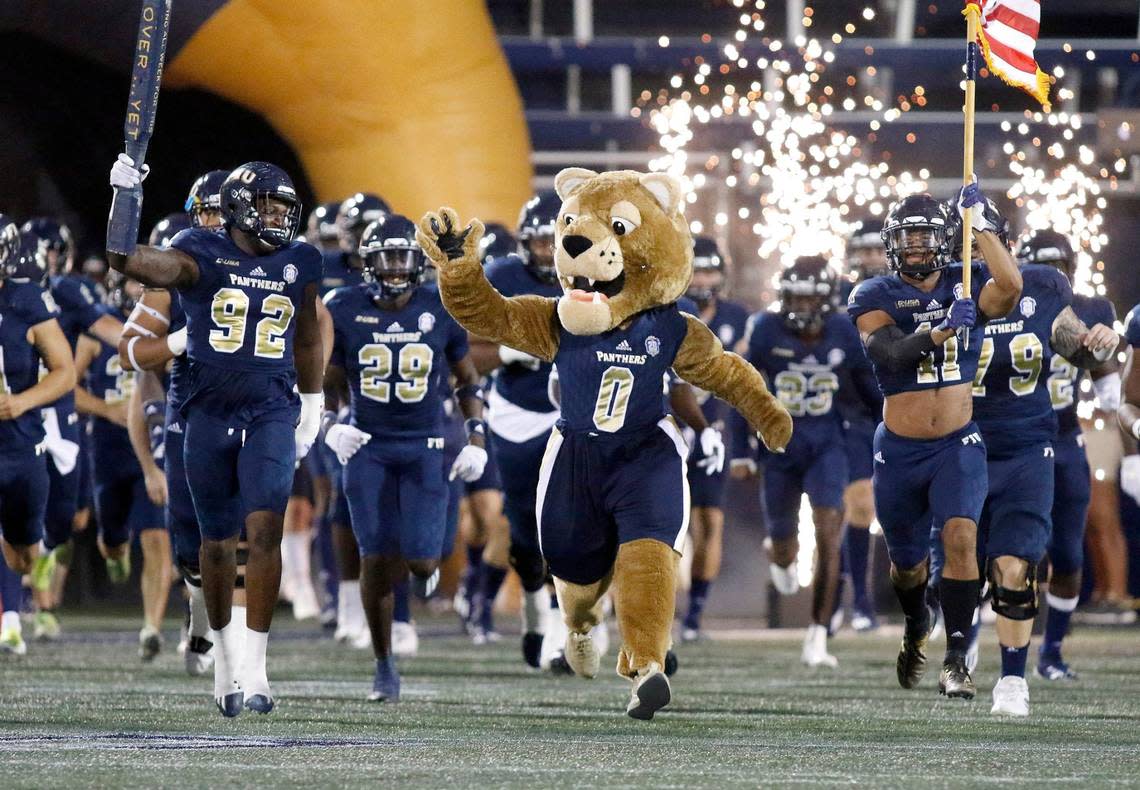
Then in 2010, the school’s athletic teams dropped the word “Golden” and became known as the Panthers. However, the Sunblazers and Son of a Blazer haven’t been forgotten. The mascot made a cameo in FIU’s 2017 homecoming parade and Sunblazers-themed merchandise eventually made its way to the shelves of FIU’s bookstore for a limited time. An FIU student sports fan organization also adopted the Sunblazers name.
While Houk said she felt sad when her mascot was replaced with a panther, she also can’t help laugh when she looks back at the design. After all, “you’ll never find a Sunblazer for any mascot or school logo,” she said.
What about Miami Dade College’s mascot?
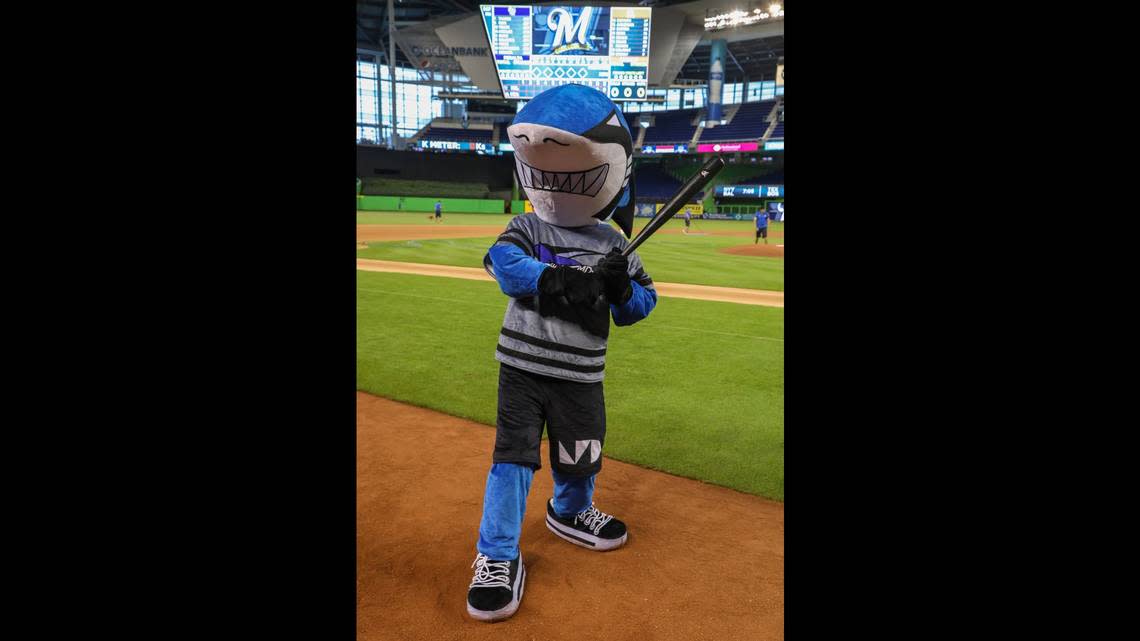
Before there was Finn the Shark, Miami Dade College had the Jaguar. And the Barracudas. And the Falcon.
The school’s first mascot, the Falcon, can be traced back to 1960, when MDC’s first campus (MDC North) opened in North Miami-Dade. Back then, the school was known as Dade County Junior College.
Members of Sigma Phi Upsilon, a chapter of service fraternity Phalanx, bought the school’s mascot and were also the ones who trained and cared for “this magnificent falcon,” according to the school’s 1962 yearbook.
“As major new campuses were built through the 1960s and early 1970s, each fielded its own complement of athletic teams and therefore its own mascot,” MDC told the Miami Herald in an email. “So, the South Campus (now known as Kendall Campus) were known as the Jaguars and the Downtown Campus (now known as Wolfson Campus) were known as the Barracudas.”
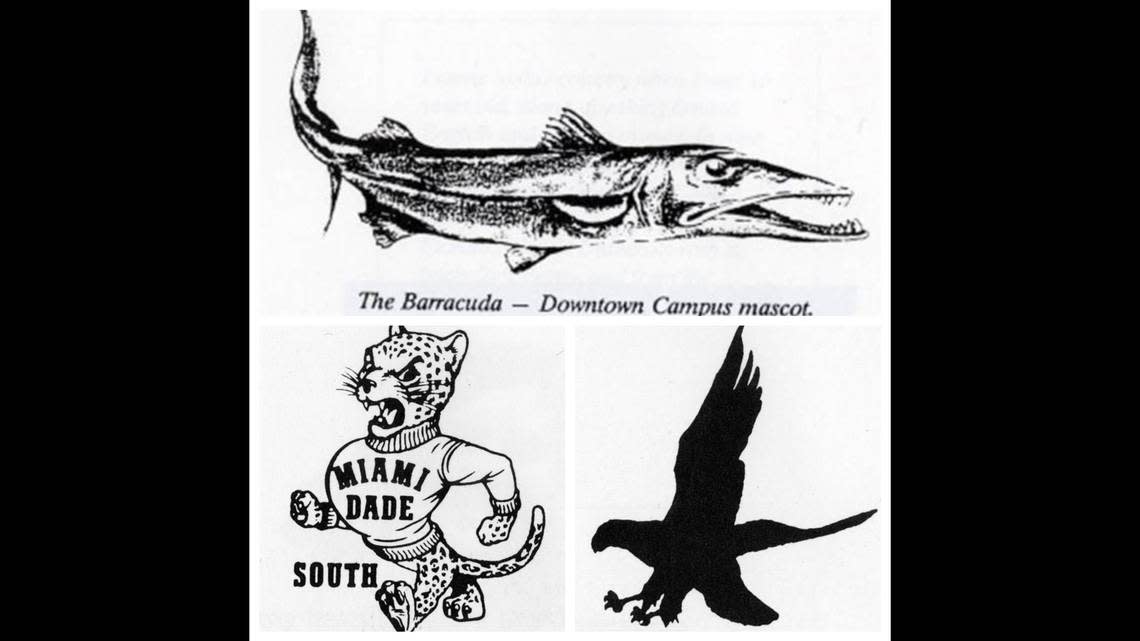
The three mascots existed until 1998, when the college consolidated its athletic programs, creating one team per sport, and chose one mascot — the Shark — to represent the school’s sports teams.
The mascot, which was modeled after a blacktip shark, got its name “Finn” through a contest. The name “Finn” beat out “Blade” and “Blue.”
What about the University of Miami’s mascot? While everyone loves Sebastian the Ibis, the wading bird also wasn’t the U’s first mascot. The private university’s first official mascot was a boxer pup named Hurricane I.
READ MORE: How did the Miami Hurricanes get their mascot? Curious305 looks back at UM’s Sebastian
Why are Miami-area DMV appointments hard to find?
As Florida’s population grows, driver’s license offices in Miami-Dade and Broward have seen a significant increase in demand, said Aaron Keller, director of communications at the Florida Department of Highway Safety and Motor Vehicles.
Though there’s another issue: scams.
Third-party companies are reserving free appointments to sell them to customers, Keller said. That’s led to a shortage of appointments and increased the “no show” rate.
To combat the scam problem, the department has been reviewing appointment requests, Keller said. It now cancels about 1,000 fake appointments every day. It also has extended office hours, opened locations on Saturdays and accepts walk-in customers to alleviate the appointment shortage, Keller said.
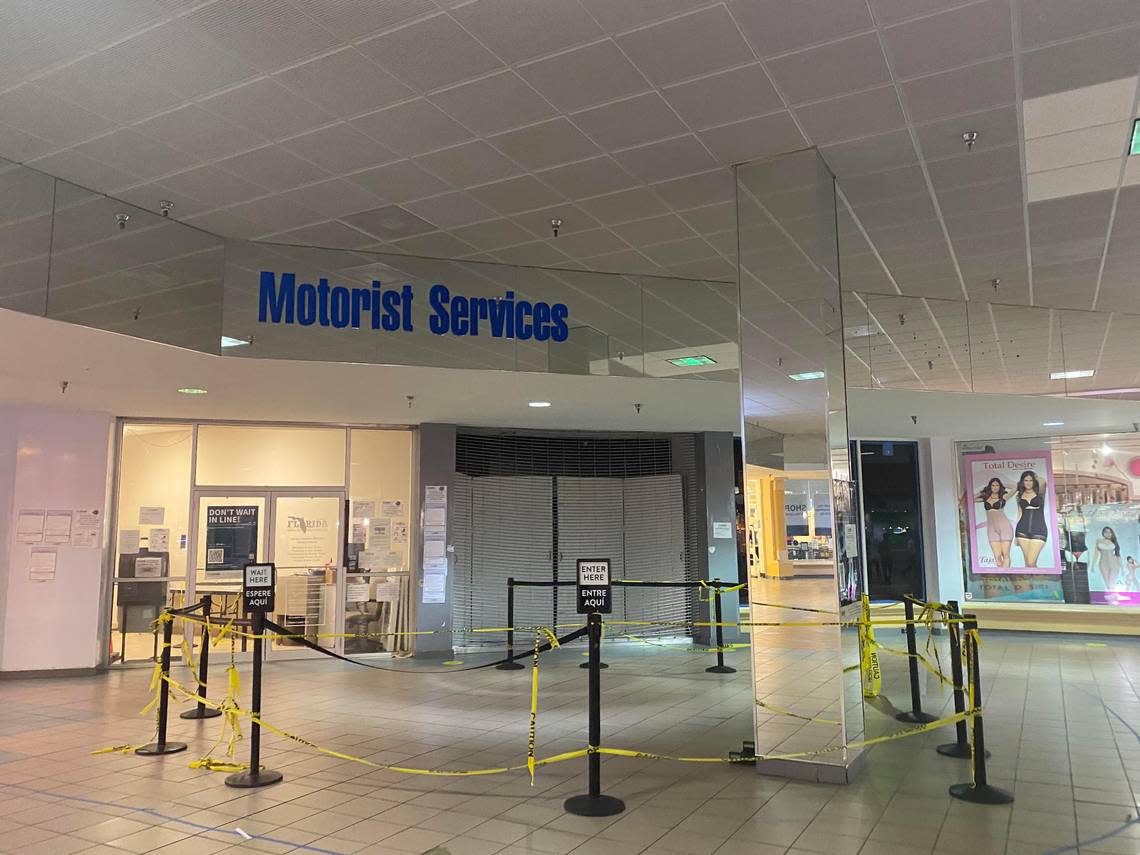
Keller also urged people to consider going online, an option that was expanded over the past year. However, some services, like taking the driver’s license exam, may still require a visit to an office.
Keller recommends customers create an account on MyDMV Portal, where you can check if the service you need can be done online.
If you have an urgent issue and can’t make an appointment or visit an office, you can request a temporary driving permit. You can also check your driver’s license status and your car’s registration and information online.
If you have to visit an office, check the service centers list or call 305-229-6333 for information on local offices, hours, addresses and services offered. You should also read through the What to Bring checklist to make sure you have all required documents before your visit.
I don’t want to wait at a drawbridge. When do they go up in Miami-Dade?
Traffic jams are part of life in South Florida.
Rush hour. A crash. A passing train. Or a stuck drawbridge. It can get frustrating, especially if you’re trying to head into or out of Miami Beach and downtown Miami.
Drawbridges can go up at any time because they are required by law to open quickly once a boat notifies the operator using sound, flag, lights or radio that it needs to pass.
However, some South Florida drawbridges, including in Miami-Dade, operate under special regulations that let them have set times (also known as “peak times”) for drivers, pedestrians and bicyclists. For some drawbridges, the special regulations reduce or delay the frequency of bridge openings for boats during a specific time-frame like rush hour.
Basically, tenders can prioritize drivers, pedestrian and bicyclist traffic over boat traffic during peak times.
Bridge tenders can open a span for a boat during peak times, but they’re not required to, except in certain situations such as an emergency, according to the U.S. Coast Guard.
So, what are the peak time schedules for drawbridges in Miami-Dade?
Here’s what the Code of Federal Regulations says:
▪ Brickell Avenue Bridge — From 7 a.m. to 7 p.m., Monday through Friday (excluding federal holidays) the bridge only needs to open on the hour and half-hour. However, it does not need to open for boats 7:35 a.m. to 8:59 a.m., 12:05 p.m. to 12:59 p.m. and 4:35 p.m. to 5:59 p.m.
▪ Miami Avenue Bridge and the SW Second Avenue Bridge — From 7:35 a.m. to 8:59 a.m., 12:05 p.m. to 12:59 p.m. and 4:35 p.m. to 5:59 p.m., Monday through Friday (excluding federal holidays) the bridge doesn’t need to open for boats.
▪ SW First Street Bridge, up to and including the NW 27th Avenue Bridge — From 7:35 a.m. to 8:59 a.m. and 4:45 p.m. to 5:59 p.m., Monday through Friday (excluding federal holidays) the bridge doesn’t need to open for boats.
▪ Venetian Causeway (west and east) — Between 7 a.m. and 7 p.m. daily, including federal holidays, it only needs to open for boats on the hour and half-hour.
▪ NE 163rd Street bridge between Sunny Isles Beach and North Miami Beach — From 7 a.m. to 6 p.m. Monday through Friday (excluding federal holidays) and from 10 a.m. to 6 p.m. Saturdays, Sundays and federal holidays, the bridge only needs to open on the quarter-hour and three-quarter hour.
▪ Broad Causeway bridge between Bay Harbor Islands and North Miami — From 8 a.m. to 6 p.m., the bridge only needs to open on the quarter-hour and three-quarter hour.
▪ 79th Street drawbridge (west and east) — From 7 a.m. to 7 p.m. Monday through Friday (excluding federal holidays), the bridge only needs to open on the hour and half-hour.
▪ 63rd Street Bridge in Miami Beach — From 7 a.m. to 7 p.m. Monday through Friday (excluding federal holidays) the bridge only needs to open on the hour and half-hour. However, it does not need to open for boats from 7:10 a.m. to 9:55 a.m. and 4:05 p.m. to 6:59 p.m. Monday through Friday (excluding federal holidays). It also has a special schedule for when the Yacht and Brokerage Show is in town.
Remember, most drawbridges are required to open for “public vessels of the United States, tugs, tugs with tows, and vessels in a situation where a delay would endanger life or property” regardless if it’s a peak time, the U.S. Coast Guard said.
Will car insurance cover iguana damage in South Florida?
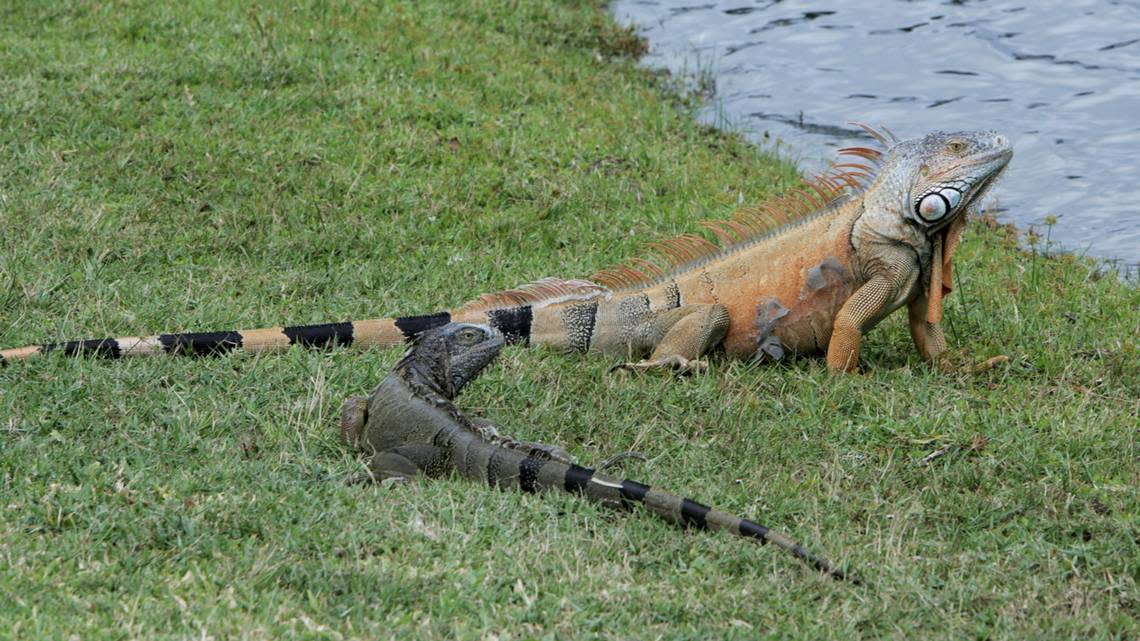
In South Florida, we don’t just have the risk of bird droppings on our car whenever we park under a tree. We have iguanas, too.
While iguanas are strong climbers — Zoo Miami spokesman Ron Magill says climbing is “an instinct” iguanas have to avoid predators while they sleep at night — the critters tend to freeze and fall out of trees whenever temperatures dip into the 40s. And you might wake up to an iguana ice pop on your windshield when we have those sporadic cold fronts this coming winter.
Iguanas, by the way, can get pretty big. The invasive species can grow to more than five feet in length and weigh up to 17 pounds. That’s more than a bowling ball, which generally weighs 6 to 16 pounds.
Iguanas eat plants and are known to cause infrastructure damage, including to seawalls and sidewalks. Sometimes they get run over or cause accidents.
While auto damage from animals is common, auto damage caused by falling iguanas is less common. The insurance companies we spoke with recently said they didn’t have any falling iguana claim data.
But if it were to happen, would your insurance cover it?
Michal Brower, a spokeswoman for State Farm in Florida, said damage caused by falling objects — even an animal such as a frozen iguana — would be covered under State Farm’s Comprehensive coverage, which includes glass claims and windshield repair.
“Comprehensive Coverage is the coverage that kicks in to repair or replace a covered vehicle damaged by something other than collision or rolling over,” she wrote.
Similarly, Nationwide says if a falling iguana incident did occur, it might be listed as a fallen object.
“In a circumstance where an iguana damages your vehicle, this could be handled as a fallen object. Insurance carriers evaluate each claim on its own merits, and vehicle damage caused by an animal would typically be covered under the vehicle’s comprehensive coverage,” Nationwide said. “No matter how unique the cause of loss, Nationwide stands ready to service the needs of our customers in the event of a covered loss.”
Allstate also hasn’t had any falling iguana claims. Neither has Geico, although the company has seen instances when iguanas found their way under the hood of a car and caused mechanical damage or chewed wiring.
“On a handful of occasions, iguanas have also caused a crash after drivers swerved to avoid them in the road,” Geico said. “Speaking of reptiles, we’re thankful there appears to be no evidence geckos have ever been involved. That’s a huge relief!”
Sounds like just another day in Florida, where iguanas pop out of toilets, gators break into homes and escaped cow herds roam the streets.
Miami Herald staff writers Grethel Aguila, Douglas Hanks and Linda Robinson contributed to this report.
